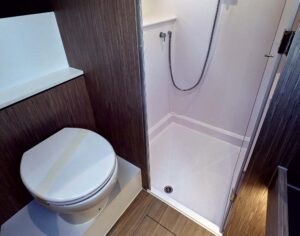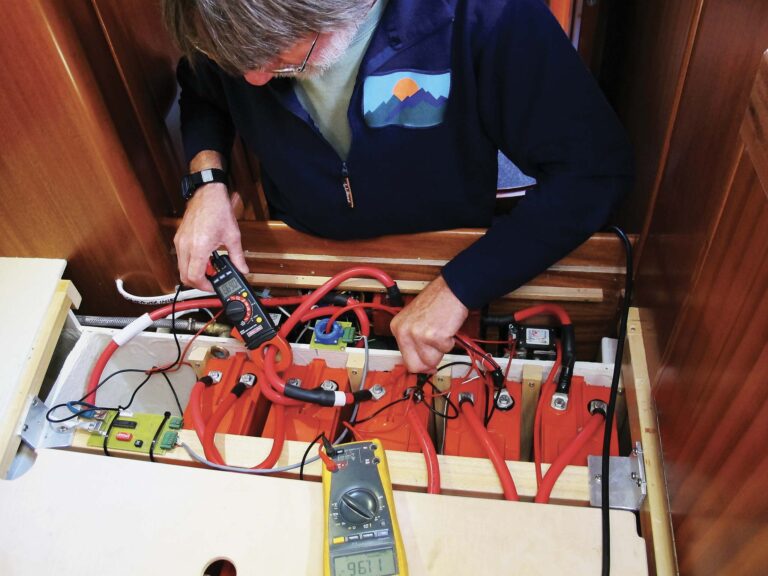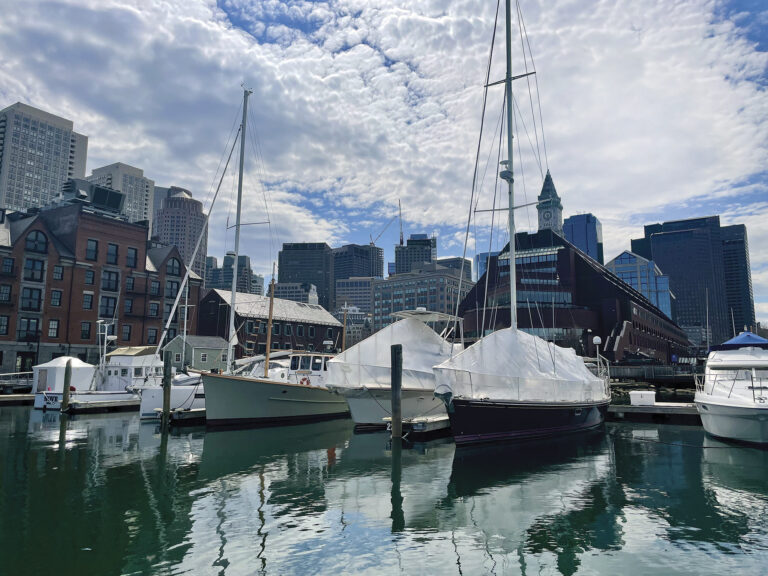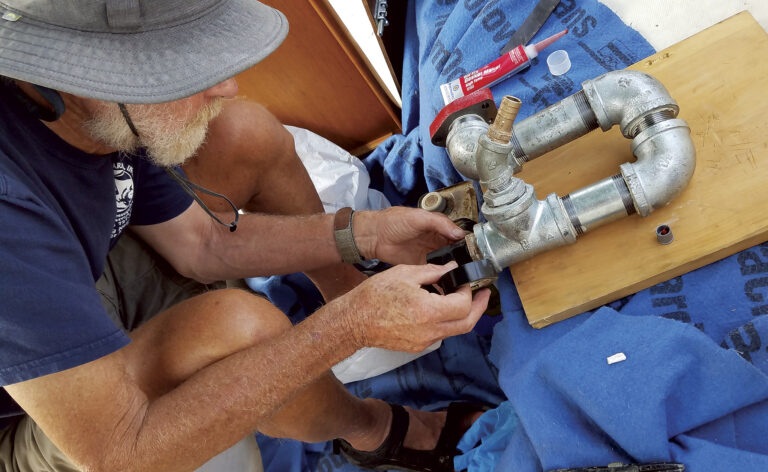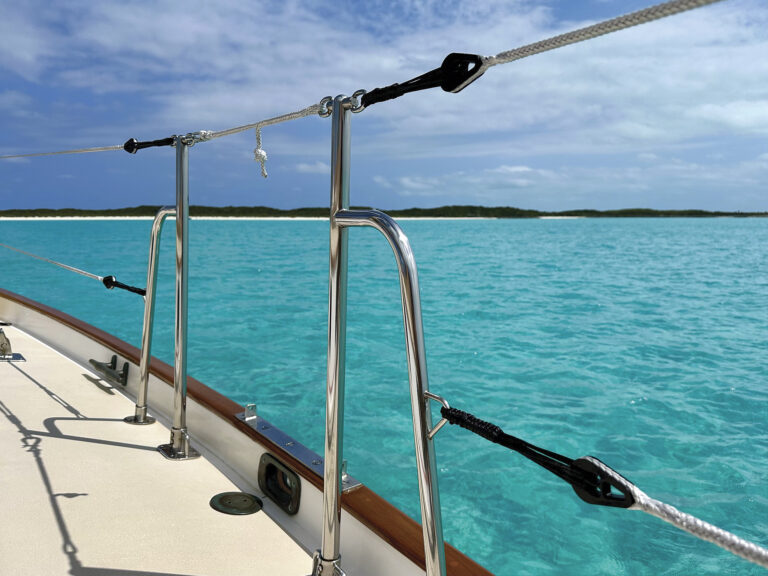Inflatable life jackets are effective, reliable and comfortable. However, unlike traditional foam-filled life jackets, they must be properly maintained if they are to function correctly. This goes double for a life jacket with an integral safety harness and/or automatic inflation. Inflatable life jackets include a number of parts that must all work properly if the life jacket is to function at all.
Routine Maintenance
Basic maintenance of an automatic life jacket with an integral harness, like my offshore inflatable life vest from West Marine, includes a regular inspection and a good washing from time to time. Check for any holes or rips in the fabric or bladder. Also check to see that the oral inflation tube and any reflective tape is still in good shape.
Make sure the harness is still securely sewn together and that none of the stitching is worn. The same goes for the D-ring attachments used to secure a tether. Get into the habit of regularly checking the “service indicator” visible in the clear plastic window of the jacket to ensure your CO2 cylinder is still capable of doing its job. Green means it’s armed and ready. Red means the life jacket is not armed and the bladder can only be inflated manually.
To wash an automatically inflating life jacket, first remove the CO2 cylinder and the sensor bobbin. Removing the bobbin is crucial, because it dissolves when wet, thus triggering the mechanism that punctures the CO2 cylinder to fill the bladder. Other life jackets may function somewhat differently. Be sure to refer to your owner’s manual to ensure you are servicing your life jacket correctly.
With the bobbin and cylinder removed, wash the life jacket with soapy water, rinse with warm water, then hang it up to dry someplace that is well ventilated and protected from direct sunlight. Once it is thoroughly dry, re-arm the life jacket with the CO2 cylinder and bobbin (making sure neither has passed its expiration date) and re-pack according to the manufacturer’s instructions.
Closer Inspection
Checking that your life jacket will inflate and retain pressure requires a proper inspection. This should be done at least once a year, at the start of the sailing season up north. West Marine recommends performing an inspection every three months if you wear your life jacket often. Same goes if you sail where it’s hot and humid, as the inflation mechanism is prone to corrosion.
Once again, you need to first remove the CO2 cylinder and bobbin. While doing so, check the date on the bobbin. If it is more than three years old replace it immediately, even if it looks sound. Also inspect the CO2 cylinder and the sensor ring or any other integral parts that might be a part of your life jacket’s inflation mechanism. If the cylinder has been pierced or is in any way damaged it needs to be replaced.
Bobbins and CO2 cylinders are available in “rearming kits” specifically configured to work with different styles of jackets from different manufacturers. Cylinders, for example, come in a variety of different weights and with different thread dimensions. Other systems require “pills” or pins to operate correctly. Never use a replacement kit specified for another life jacket. Your life jacket should have an inner label that specifies the model number of the rearming kit it needs.
With the bobbin and CO2 cylinder removed, inflate the bladder in your life jacket using the oral inflation tube, until the bladder is firm. Then dunk the valve and look for any bubbles indicating a leak. If there is a leak, replace the life jacket. Otherwise, let the inflated bladder stand overnight. If it is softer the next morning, you need a new jacket.
Back Together Again
If all is still well, deflate the bladder and rearm the inflating mechanism according to the manufacturer’s instructions. In the case of my offshore inflatable life vest, it is important that the bobbin is oriented correctly (white side up) and the CO2 cylinder is installed correctly with a clockwise 1/8 turn to a full stop. Anything less and the green indicator won’t switch on, and the life jacket won’t work.
After that, repack the bladder according to the manufacturer’s instructions. Don’t just cram the thing back inside the outer protective shell and leave it at that.
On my life jacket, the outer edge of the bladder panels on either side are first folded inward and then both edges are folded outward on top of each other. The outer shell is then snapped shut. Make sure the service indicator is visible through the clear plastic window and the manual pull tab is readily accessible.
If there is any doubt that things are not working properly, don’t hesitate to consult a professional.


